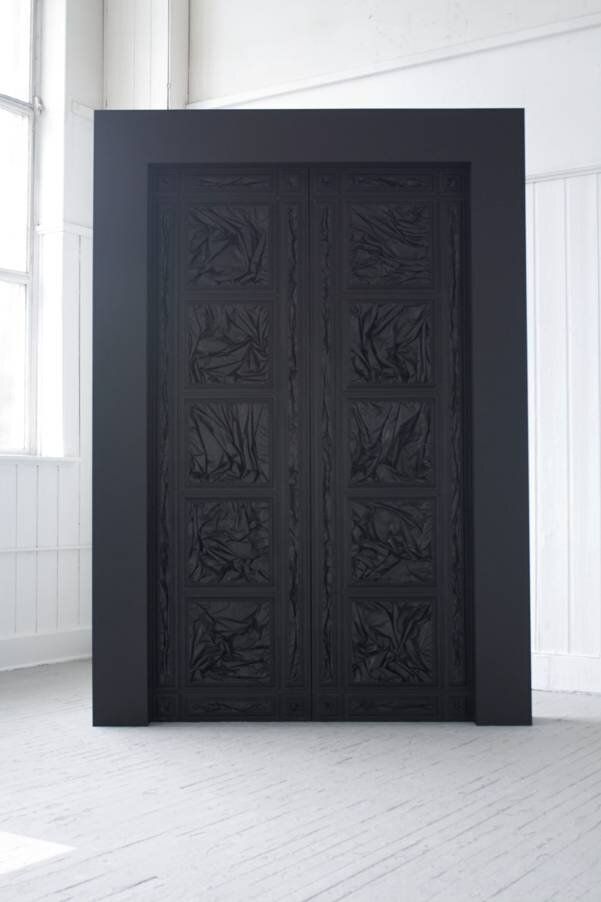Damien Hirst's retrospective currently showing at the Tate Modern begins with a few tired attempts from his early career. One work, for example, is nothing more than a set of pots painted in bright colours and hung from a wall. Clearly it's often difficult to predict later greatness (or even style) from the embryonic stages of an artist's career. Much of the time we are merely witnessing an experiment; part of a wider process of development. Nevertheless the chaotic unpredictability and experimental nature of early works often produces some great surprises.
The New Contemporaries exhibition is in its fourth year and gives a platform to the best and brightest new talent from Scotland's leading art institutions. There's a great variety of works on offer here from the Edinburgh College of Art, the Glasgow School of Art, Duncan of Jordanstone College of Art and Design, Gray's School of Art and Moray School of Art. The exhibition also considers some interesting works from architectural students from across Scotland.
The exhibition begins with an arresting set piece. The viewer ascends the echoing steps of the Academy's interior under the gaze of the impressive and looming The Black Gates by Clare Flatley. Wrapped in the eerie strains of Sarah Hardie's I'm Calling voice piece, the monolith stands indifferent to the oncoming viewer. It is both an attractive and faintly threatening feeling; the Gates demand a degree of respect and reverence while the music consoles and encourages. The combined effect produced by these two separate pieces feels very ancient; the interplay between the sublime music and harmony with the reverence, awe and even fear of something greater than ourselves is excellent. The exhibition then slips from the sublime into the stodge, with Andrew Mason's Potato Fountain. Again the enticing effects of good sculpture are realised. Despite the repulsion many of us will feel when we see the horrific domestic scene of hundreds of (unpeeled and sprouting) potatoes, the work nevertheless produces a strangely relaxed and balanced tone. Mason is playing with the strange effects objects can take on when wrapped in the classical confines of the art gallery. Running water no longer represents chores to be done but calm; the smell of the ripened staple is a novelty rather than a problem.

Clare Flatley The Black Gates
These examples highlight how good art should appeal, on some level, good or bad, to our primary senses and unconscious. They may not set out deliberately to do this, but succeed nonetheless. They are also works which interact with and recognise the space of the gallery they have been placed in.
Other works, such as Holly E. Keasey's 47 Bottled Seas are less suited to the confines of space, and rely heavily on underlying ideas or concepts, rather than the finished product. To rely so much on the audience's intellect - their heightened sense of irony, understanding of art history or awareness of pop-culture - is risky. If a piece of art is nothing more than a clever idea (or worse, a pun), why not simply write it down? What makes the initial two pieces, which touch on the eternal and sublime as well as the domestic grind, so interesting is that they satisfy our initial instincts as viewers, and only then attempt to court our intellect. No doubt there is a hint of Ghilberti in Flatley's work and Duchamp in Mason's, but knowledge of this is not a prerequisite for enjoying the pieces.

Andrew Mason 'Potato Fountain'
The artist should be attempting to tap into something subconscious and beyond the realms of normal expression or understanding in what they produce. To appeal to the great mass of people; to turn art from something academic to something relevant and arresting, art should go beyond intellectual flirtation with an informed audience. The artist should be seizing the unseen senses of the audience and forcing them to pause - even momentarily - to consider their works. The New Contemporaries, as a result, is a show charged with developing and often opposing ideas about art. I have my opinions; doubtless there are many who would disagree. Nonetheless, this exhibition is a great stimulant, as we attempt to understand and justify our favourites. As ever this exhibition challenges, offends, delights, confuses and acts as a strong barometer of the prevailing zeitgesit.